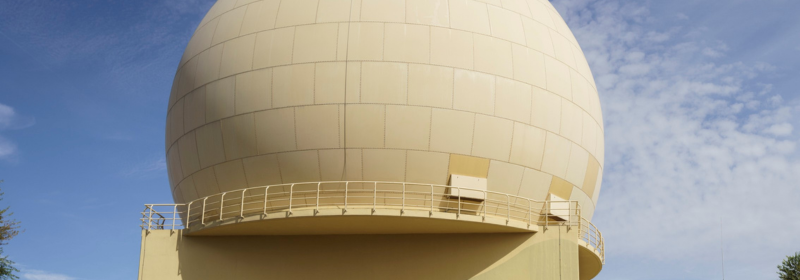- The new Lanza 3D radar has been deployed in the Air Surveillance Squadron 2 (EVA-2), located in the province of Toledo, responsible for surveillance the air space of the central area of the peninsula
- This is the first of a series of five new radars that Indra will deliver equipped with the most advanced technology to detect all types of aircraft, drones and missiles
- Once in operation, the entire Spanish network of airspace surveillance will be based on Indra radar, thereby bolstering the technological sovereignty and autonomy of the Armed Forces
- These systems are, in turn, part of NATO's Integrated Air and Missile Defense System (NATINAMDS), critical to the defense of the continent and its allies

Indra has completed the implementation and testing of the new Lanza 3D long-range radar to be used by the Air Surveillance Squadron 2 (EVA-2) of the Spanish Air and Space Force, located in the province of Toledo and responsible for the surveillance of the central area of the peninsula.
The project being implemented by Indra is part of the ongoing process to modernize the Spanish Air and Space Force's air surveillance and control system and strives to replace systems that have reached the end of their service life with next-generation equipment.
All in all, Indra will deploy five radars: four fixed Lanza 3D LRR (Long Range Radar) and one deployable Lanza 3D LTR-25 (Long-range Tactical Radar). Furthermore, the program will address technological developments that enable future upgrades of the 3D Lanza systems in service in the Air Surveillance Squadrons and extend their service life, improving their operational performance to face new threats.
For years, most of Spain's airspace surveillance has been carried out by Indra's Lanza 3D radars. Once the delivery of these new systems is completed, all EVA squadrons protecting our airspace will operate with the company's radars, which are equipped with the latest technologies to detect aircraft, drones and missiles with a smaller radar section, those that use newer materials and technologies to go undetected.
The application of cutting-edge technologies developed by Indra makes the Lanza 3D one of the most advanced and reliable radars on the market, one capable of detecting a wide range of targets.
These systems are, in turn, integrated into and are a key element of the NATO Integrated Air and Missile Defense System (NATINAMDS), which protects the European countries of the Atlantic Alliance.
The Defence Systems Business Development director, Francisco Jiménez, points out that "the Ministry of Defense and the Armed Forces made a decision decades ago to foster the development of this technology within Spanish industry and today we can say that we are one of the most advanced countries in the world in this field. The technologies used in the development of radar also have countless civilian applications and are strategic for the development of the information societies in which we live."
For years, the company has been providing the Air Force with radar support for EVA radars, a key aspect to guarantee maximum operation of these critical defense systems. This support is also increasingly advanced and is progressively incorporating new technologies to improve it constantly.
Technological sovereignty
Indra is one of the world-leading radar manufacturers. As a result, allied countries, and especially Spain, have a cutting-edge company working to ensure their superiority in this field. It should be noted that these sensors are a key deterrent due to their early warning and detection capability of any attack or airspace violation. In their on-board versions, they largely determine the capabilities of fighters, helicopters, ships or armored vehicles, determining their superiority.
Indra has one of the largest radar factories in Europe, with more than 7,000 square meters and more than 200 specialized professionals, who develop radars used by some of the world's most advanced armies on five continents. It has supplied radars to European countries such as France, Germany, the United Kingdom, Lithuania and Poland, and has also delivered mobile radars to NATO. It has also participated in the development of the Eurofighter's Captor radar and is currently working on it, bringing its superiority to one of the most advanced multi-role combat aircraft in existence, as well as supplying systems of this kind for all types of air, naval and ground platforms. It has also developed a space detection radar currently operated by the Spanish Air and Space Force, which is among the most advanced on the continent, with the capacity to detect objects in orbit thousands of kilometers from Earth.